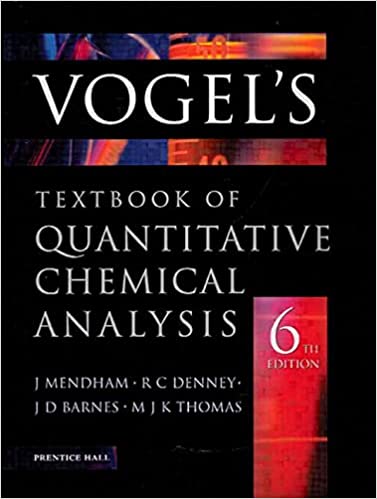Standardization of solutions used as acid-base titrants
0.2M sodium hydroxide standardization against HCl
Sodium hydroxide solution can be standardized against hydrochloric acid solution of known concentration. This procedure is an easy and convenient one, especially taking into account fact, that hydrochloric acid solutions are very stable.
NaOH + HCl → NaCl + H2O
NaOH solution should be titrated against methyl orange or phenolphthalein. Indicator selection depends on the presence of carbonates in the sodium hydroxide solution. If the solution is carbonates free, end point volume will be identical in both cases. In the presence of carbonates, titration against phenolphtalein will end faster.
Standardization procedure to follow:
- Pipette 25 mL aliquot of NaOH solution into 250mL Erlenmeyer flask.
- Add 50 mL of distilled water.
- Add 1-2 drops of methyl orange solution.
- Titrate with 0.2M hydrochloric acid till the first visible color change.
To make end point detection easier it is worth to prepare a comparison solution, identical to the titrated one; this way first color change is easier to spot.
To calculate sodium hydroxide solution concentration use EBAS - stoichiometry calculator. Download sodium hydroxide standardization against hydrochloric acid solution reaction file, open it with the free trial version of the stoichiometry calculator.
Click button in the upper (input) frame above HCl, enter volume and concentration of titrant, click . Click button below NaOH in the output frame, enter volume of the aliquot used, read solution concentration.
0.2M sodium hydroxide standardization against KHP
Sodium hydroxide solution can be standardized against potassium hydrogen phthalate (KHP). Reaction taking place during neutralization is
NaOH + KHC8O4H4 → KNaC8O4H4 + H2O
Standardization procedure to follow:
- Weight exactly about 1.4-1.6 g of dried potassium hydrogen phthalate KHP into 250 mL Erlenmeyer flask.
- Add about 70 mL of freshly boiled, carbon dioxide free distilled water, dissolve.
- Add 3-4 drops of phenolphthaleine solution.
- Titrate with NaOH solution till the first color change.
To calculate sodium hydroxide solution concentration use EBAS - stoichiometry calculator. Download sodium hydroxide standardization against solid KHP reaction file, open it with the free trial version of the stoichiometry calculator.
Enter KHP mass in the upper (input) frame in the appropriate mass edit field. Click button below NaOH in the output frame, enter volume of the solution used, read solution concentration.
0.2M hydrochloric acid standardization against sodium carbonate
Sodium carbonate is a salt of a weak acid. When titrated with hydrochloric acid carbonate decomposes, yielding carbon dioxide and water:
Na2CO3 + 2HCl → 2NaCl + CO2 + H2O
Evolving carbon dioxide acidifies the solution, and the end point in its presence is detected too early. To avoid titration errors we boil titrated solution to remove carbon dioxide.
Procedure to follow:
- Weight exactly about 0.3-0.4 g of dried sodium carbonate into 250 mL Erlenmeyer flask.
- Add about 70 mL of distilled water, dissolve.
- Add 1-2 drops of methyl orange solution.
- Titrate with about 0.2M HCl solution till the first color change.
- Heat the solution to boil to remove dissolved carbon dioxide. Solution may change color back to yellow.
- Titrate with HCl solution till the first color change. Repeat titration and boiling till yellow color doesn't return after cooling the solution.
To make end point detection easier it is worth to prepare a comparison solution, identical to the titrated one; this way first color change is easier to spot.
To calculate hydrochloric acid solution concentration use EBAS - stoichiometry calculator. Download hydrochloric acid standardization against sodium carbonate reaction file, open it with the free trial version of the stoichiometry calculator.
Enter Na2CO3 mass in the upper (input) frame in the mass edit field above sodium carbonate formula. Click button below HCl in the output frame, enter volume of the solution used, read solution concentration.
0.2M hydrochloric acid standardization against borax
Borax has relatively high equivalent mass, which means potential errors in the standardization are smaller than in the case of other substances.
Reaction taking place during neutralization is
Na2B4O7 + 2HCl + 5H2O → 4H3BO3 + 2NaCl
Boric acid is so weak, that its presence doesn't interfere with end point detection (compare with standardization against sodium carbonate).
Procedure to follow:
- Weight exactly about 1.2-1.4 g of dried Na2B4O7·10H2O into 250 mL Erlenmeyer flask.
- Add about 70 mL of distilled water, dissolve.
- Add 5-6 drops of methyl red solution.
- Titrate with HCl solution till the first color change.
To make end point detection easier it is worth to prepare a comparison solution, identical to the titrated one; this way first color change is easier to spot.
To calculate hydrochloric acid solution concentration use EBAS - stoichiometry calculator. Download hydrochloric acid standardization against borax reaction file, open it with the free trial version of the stoichiometry calculator.
Note, that to be consistent with the use of decahydrate molar mass and to be able to balance water, reaction equation is not the one shown above, but
Na2B4O7⋅10H2O + 2HCl → 4H3BO3 + 2NaCl + 5H2O
These are perfecly equivalent. Enter Na2B4O7·10H2O mass in the upper (input) frame in the mass edit field above borax formula. Click button below HCl in the output frame, enter volume of the solution used, read solution concentration.





